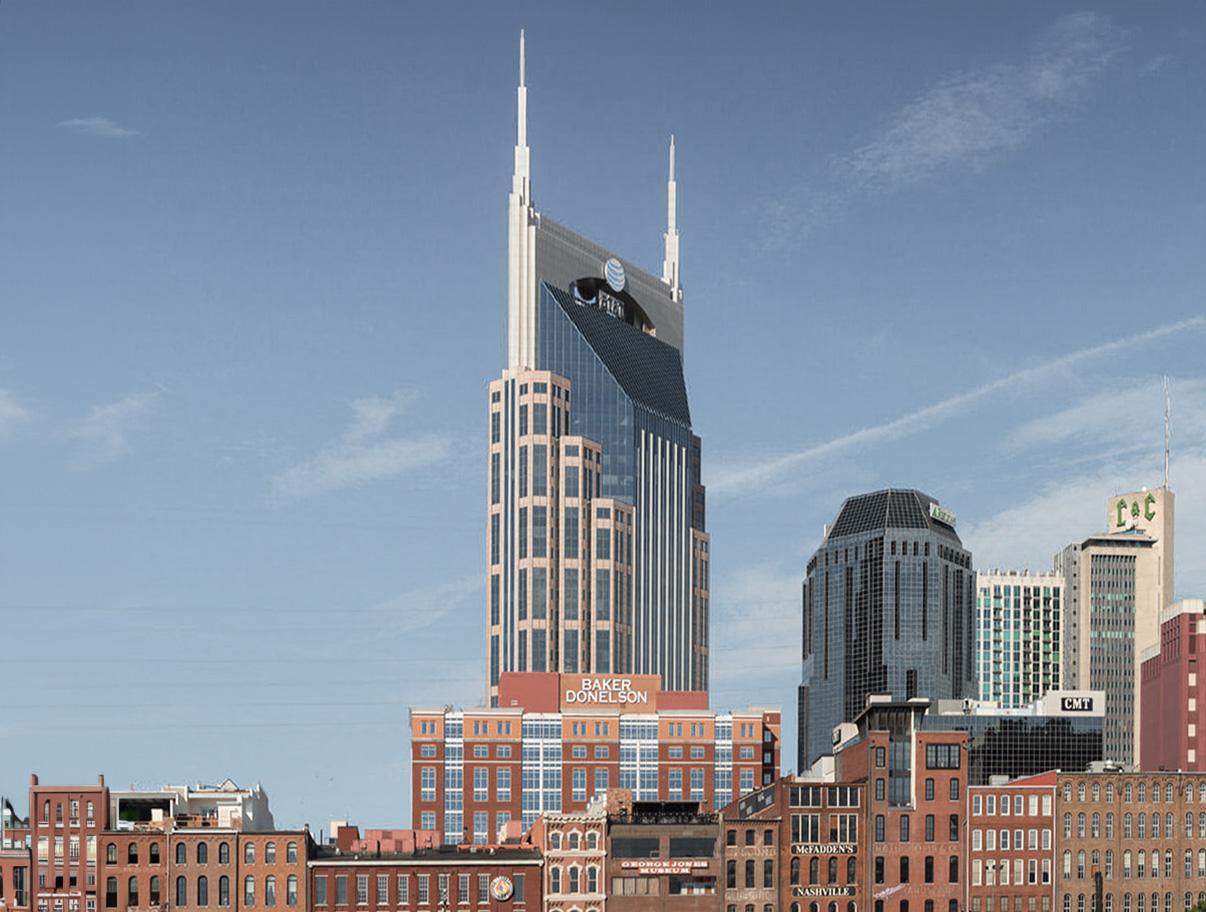The AT&T Building is a Postmodernist skyscraper designed by Earl Swensson Associates, and built between 1991 and 1994, for a reported $94.0 million dollars, in Nashville, TN.
AT&T Building is not the only name you might know this building by though. It is common for companies to want to attach their names to iconic buildings when they move in, or for the general public to come up with nicknames, and this one is no exception. The building has changed names several times over the years, and is also known as:
- Batman Building.
- BellSouth Building.
- South Central Bell Headquarters between 1994 and 2007.
Its precise street address is 333 Commerce Street, Nashville, TN. You can also find it on the map here.


